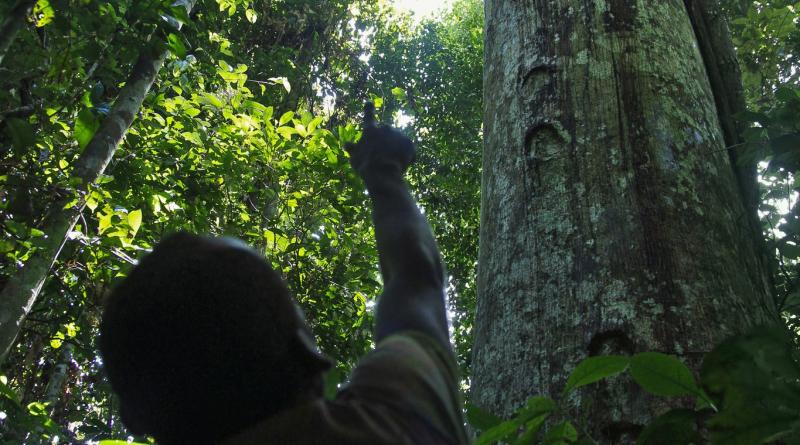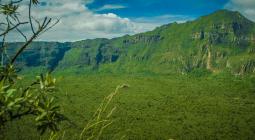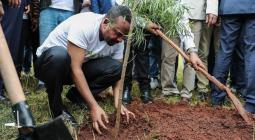A Battle to Protect Forests Unfolds in Central Africa.

Indigenous people, environmentalists and industries vie for control over lands that can offer economic benefits or climate protection — but not always both.
Beneath the forest canopy, Lucien Maka steps out of a clearing and into his element.
He darts over the shaded undergrowth and finds a cluster of mushrooms, deftly wrapping them in a bundle of leaves. His friend hacks apart a thick branch and gulps down the clean water stored within. They pocket several caterpillars — a local delicacy — and point upward to a bees’ nest swollen with honey, before slashing another tree’s bark to release soaplike sap and wash their hands.
For the outsider, the rain forests of the Central African Republic are an intimidating confusion of vines and towering trunks. For Mr. Maka, whose fellow Bayaka “pygmies” have lived here in the Congo Basin for millenniums by hunting and gathering, this lush wilderness is as convenient as a downtown deli.
“The forest has always provided everything we need,” says Mr. Maka, who is in his early 30s although unsure of his exact age.
But displacement, discrimination and a drawn-out war have put his homeland under pressure. He clambers over a felled tree, emerging in an area cleared by farmers for a cassava crop. “We used to gather food here,” he says. “We must go deeper into the forest.”

The plight of the world’s forests, which mitigate rising global temperatures by soaking up the main greenhouse gas, carbon dioxide, came under the spotlight last year as blazes flared up across the Amazon and central Africa. Australia’s bush-fire crisis has further highlighted the urgent need to avert a warmer, drier climate.
Last week, a world away from these hot spots, hundreds of global leaders and business executives convened in the Swiss ski resort of Davos for the World Economic Forum’s annual conference. How to protect forests like Mr. Maka’s was on its environmental agenda.
The forum backs a group called the Tropical Forest Alliance 2020, which brings together household names like Mars, Nestlé and Walmart alongside more than 100 other corporations, nonprofits and governments. It was founded to help an industry trade group, theConsumer Goods Forum, meet a commitment its members made 10 years ago to stop using ingredients that contribute to deforestation by 2020.
But most of the retail and manufacturing giants that make up the alliance have been unable to fully achieve the goal. “I don’t think a single one can say they’ve met their commitments 100 percent,” said Justin Adams, executive director of the Tropical Forest Alliance 2020.
Since the pledge was made a decade ago, at least 50 million hectares of forest, or 123.5 million acres — an area twice the size of the United Kingdom — have been destroyed for commodities, according to an analysis by Greenpeace International.
Nestlé, which makes Cheerios, Kit Kat bars and Haagen-Dazs ice cream, says over 90 percent of its key agricultural commodities will be “deforestation-free” by the end of 2020. Mars, best known for its chocolate bars but also responsible for many other products, says commitments for cocoa, beef and soy will be met by 2025 and, for palm oil, by the end of this year.
Kellogg’s, the company behind Pringles chips and Crunchy Nut cereal, said that “like others, we will fall short of the deforestation goal.” While Walmart is “on track” to meet the goal in its own-brand products that use paper and palm oil, a spokeswoman said “soy and beef chains are more opaque and complex,” impeding “transparency and progress.” Other multinationals, like Mondelez, PepsiCo and Unilever did not respond to requests for figures or declined to supply them.
“I don’t think anybody, when they were making these commitments, envisaged it was going to be anything like as hard,” Mr. Adams added.
*photographs by Jack Losh
28 January 2020
The New York Times




